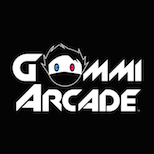Code of Silence
02.20.2012
ART & DESIGN
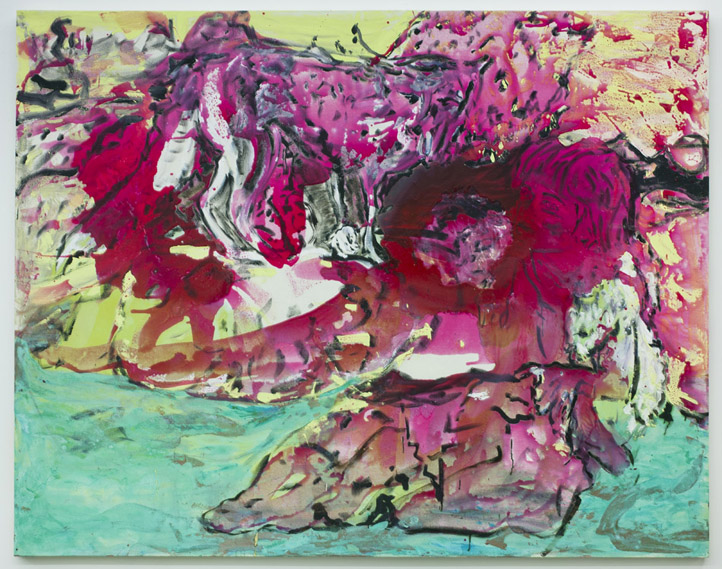
Lola Montes Schnabel’s first solo exhibition of paintings “Love Before Intimacy” opened at the Hole in New York City in December. She produced five paintings using a five-color palette for the show. The work is made up of an electric pink, sea green, soft purple, chartreuse, and black. Schnabel has been in the limelight for most of her life. She is the daughter of artist and filmmaker Julian Schnabel and fashion designer Jacqueline Schnabel. Her brother Vito is an art dealer and her sister Stella is an actress. But Lola is her own woman, who turns to Spanish Romanticism and the Butoh dancer Katsuo Ohno for inspiration. She spoke to Life + Times before taking a vow for ten days of silence in India.
Life+Times: In the show “Love Before Intimacy” at the Hole Gallery, you’ve constructed a narrative of androgynous youth on a remote Greek island. Where did the narrative start for you? Did you travel to this island?
Lola Montes Schnabel: The narrative for the suite of paintings comes from a Greek film from 1968 called Young Aphrodite. I had been shown this film in Rome when I was 14 by the artist Luigi Ontani and in my memory had remembered it as a film about hermaphrodites. It was a surrogate to explore the other kind of relationships love can be imbued in. Say with an animal or nature while having, the elements —water sky and the horizon as a backdrop.
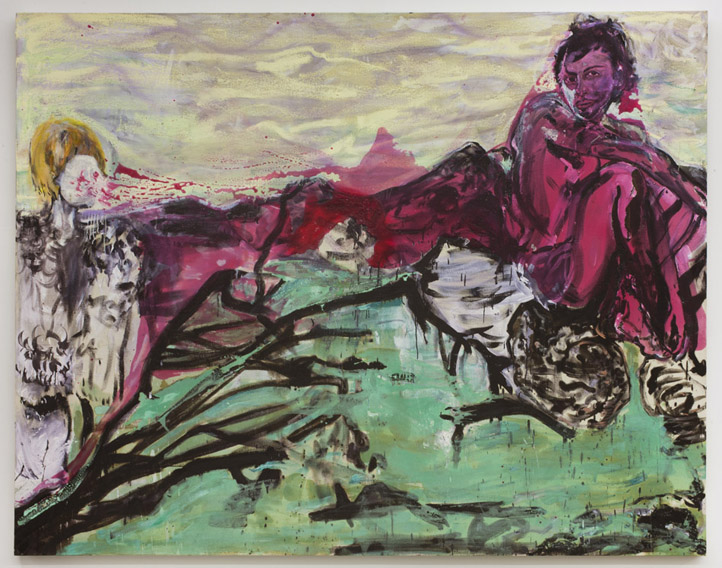
L+T: I read that you limited your palette to five colors in the tradition of the Spanish Romantics. How did you select your color palette and what led you to five?
LS: Setting boundaries making a clear deduction to stop somewhere allows you to be more free. I wanted to pick out my ingredients and by containing myself with those go inside and out of that possibility. I knew the mood of the pictures would be set by that limitation repeated. Five is also a good number.
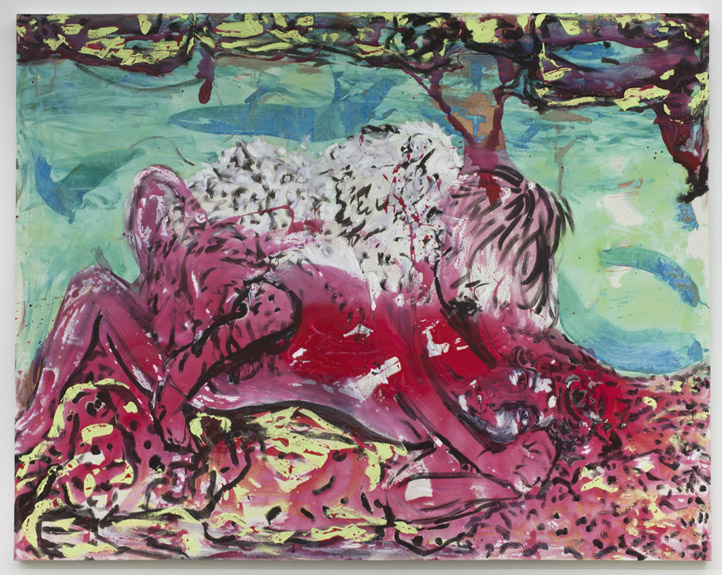
L+T: You worked with bleached linen and rabbit glue, asphalt, plaster weld, and copper plating solution. How did you develop your process for working with these materials?
LS: I’m a wrangler of stuff and often look in hardware stores or off the beaten path for effects I see on ruins or demonstrated stains in the world outside my studio to replicate. I had seen little pink corners in a house under construction and wondered what that color came. So I went to [supply store] Benjamin Moore and picked up a sponge brush and a bucket of plaster weld. Art supply stores are over rated.
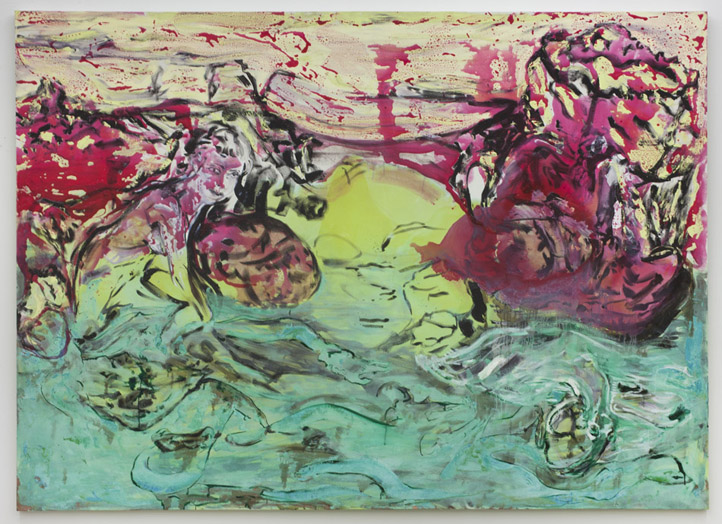
L+T: People will naturally draw connections between you and your father, Julian, who also a painter. How has your father influenced you and your work? Other major personal influences?
LS: My pops has an unbounded force within him that connects him to all my art gods — Caravaggio, Duchamp, Holbein, Katsuo Ohno the Butoh dancer, Andrei Tarkovsky, Sergaii Parajanov, [the Georgian filmmaker who made color of pomegranates], Brueghel — to name a few. Dad uses materials off the beaten path — army tarps, velvet, maps, found objects, subversive materials. I like that he breaks the conventions of paint on canvas. He is committed to art and nothing else in a very spiritual way. It’s almost as if he is consecrating what he touches and thousands of years are coming through him. I admire how outspoken he is, that he says what he thinks and listens to himself.
L+T: So where are you in India?
LS: I am writing you from heaven on earth. Doing spiritual studied and a mind altering practice I learned through Sahdguru’s teachings in an ashram near southern India called the ISHA Foundation. It is structured in such a way that all that you have sparkling begins to shine and any thing dark is dispelled, this is the definition of the word GURU and his blessing. It is a volunteered based program at the Velliangiri foothills near Coimbatore where the deity Shiva once walked in these mountains and the feeling is exuberant with mystery. I’m making a short film about the schools Isha Vidya has set up for children from rural villages who would not get an education other wise and preparing my system for eight days of silence (at the) end of February with a daily eight hour practice, devotion and raw food.
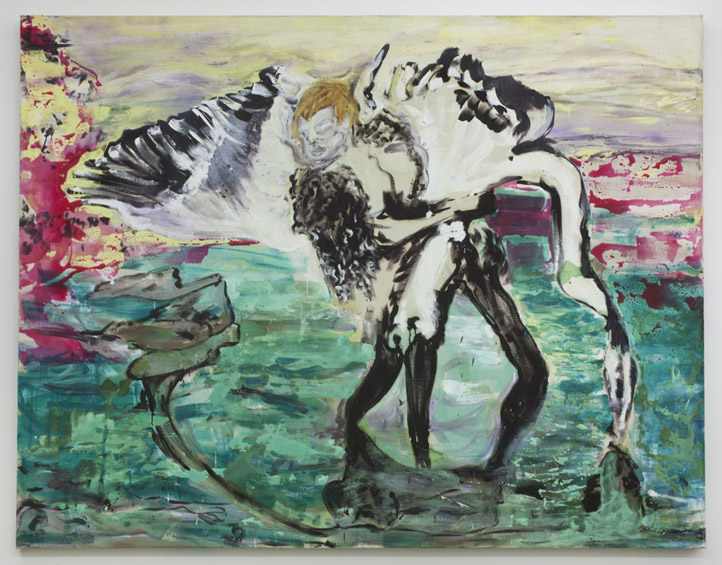
L+T: What’s the premise for the short film on Sahdguru?
LS: I brought paper and watercolors so I’ve been drawing but really this Hatha yoga and Settha — ancient natural medicine— begins to open up your Nadis and your existence is transformed to one of unbounded love and awareness. It is a scientific method and I am in awe of SahdGuru’s dedication to the well being of humanity.
L+T: Tell me about ten days of silence. Do you have a routine planned for that time? Are you allowed to communicate in other way?
LS: This is a great time to be making art. The entire world is in transition from Wall Street to the Arab Spring. 2012 will be a year of awakening and hopefully the art scene will be a platform for such dialogue. I’m not part of any scene so I can only answer this question partially. I’m excited about contracting in a time if endless expansion. It is time to distill this need to look out for the answer or to fill your desire and seek with in.
L+T: I believe you were raised mostly in New York City, and were educated at Cooper Union. What do you think of the New York art scene at the moment?
LS: I want to have a show in Germany and be part of a dialogue out side the U.S. This is important to me as I am mostly eastern European. My mother is from Antwerp and my dad’s roots are in Romania and Czech Republic.
L+T: What’s next?
LS: There are paintings coming to me in meditation that I will make when I’m back in the studio and a couple short film projects I have in mind. I am also dedicated in what Isha can do to help balance the world. It is a wonderful program to enlighten and bring consciousness to education, science and humanitarian purposes.





